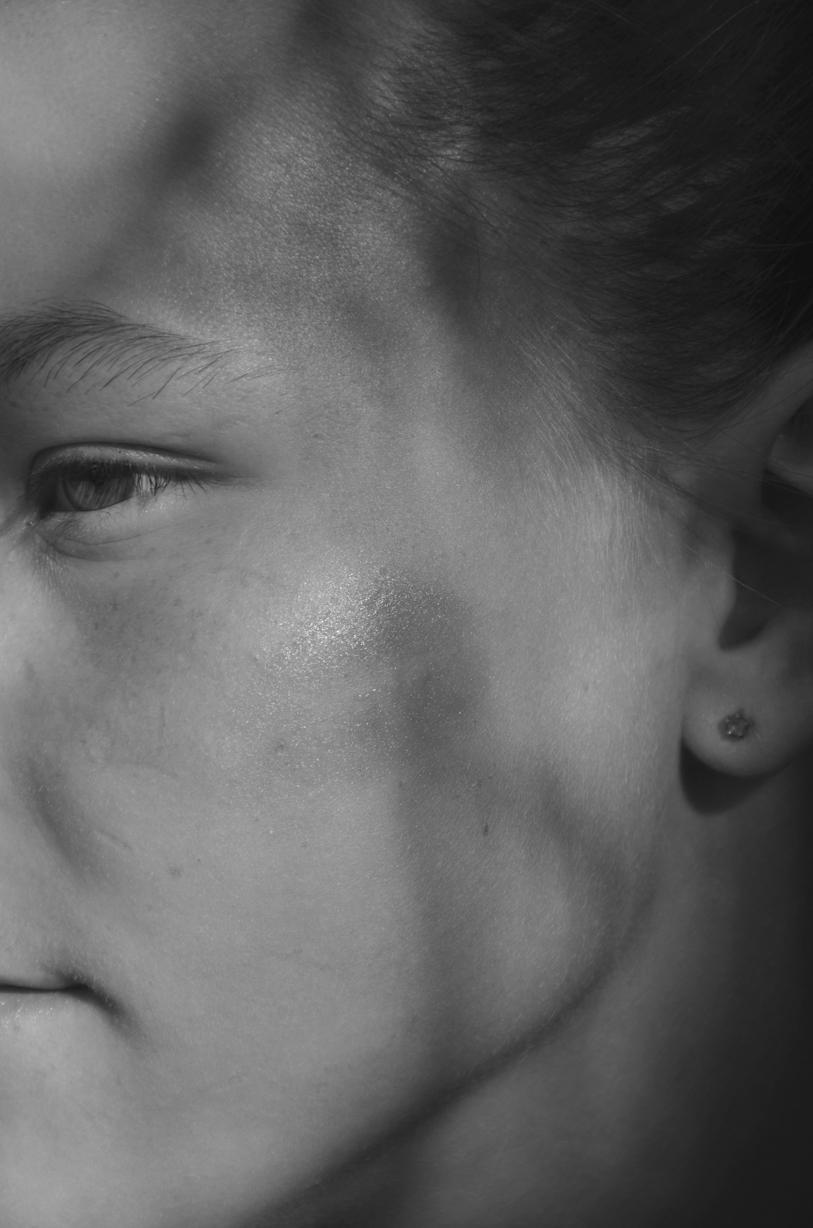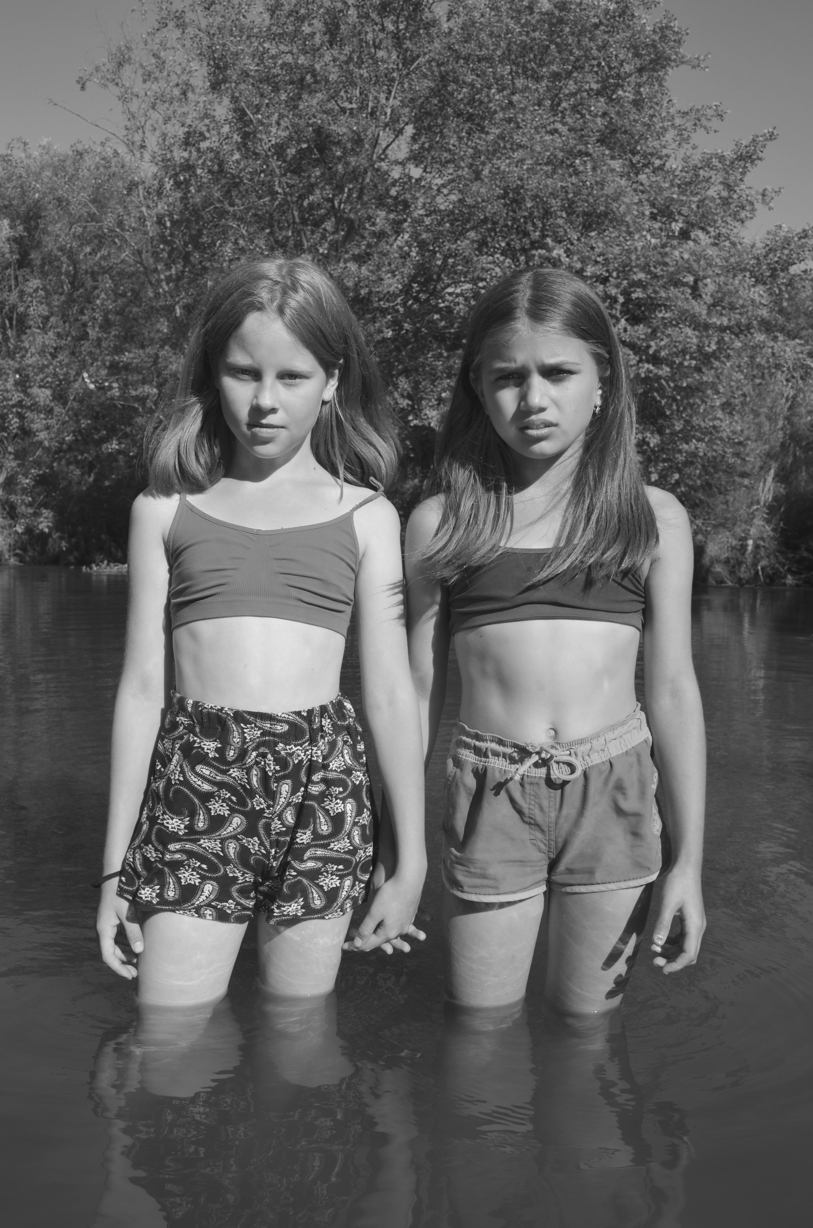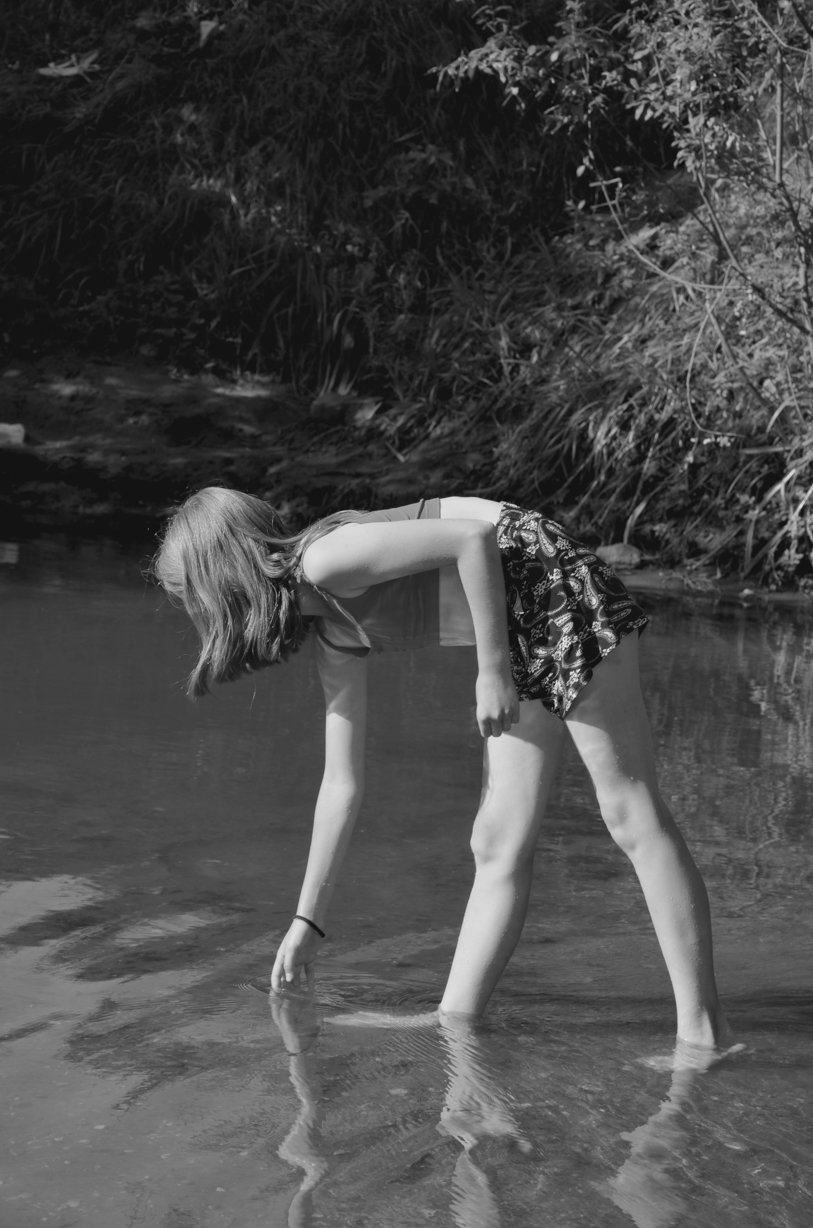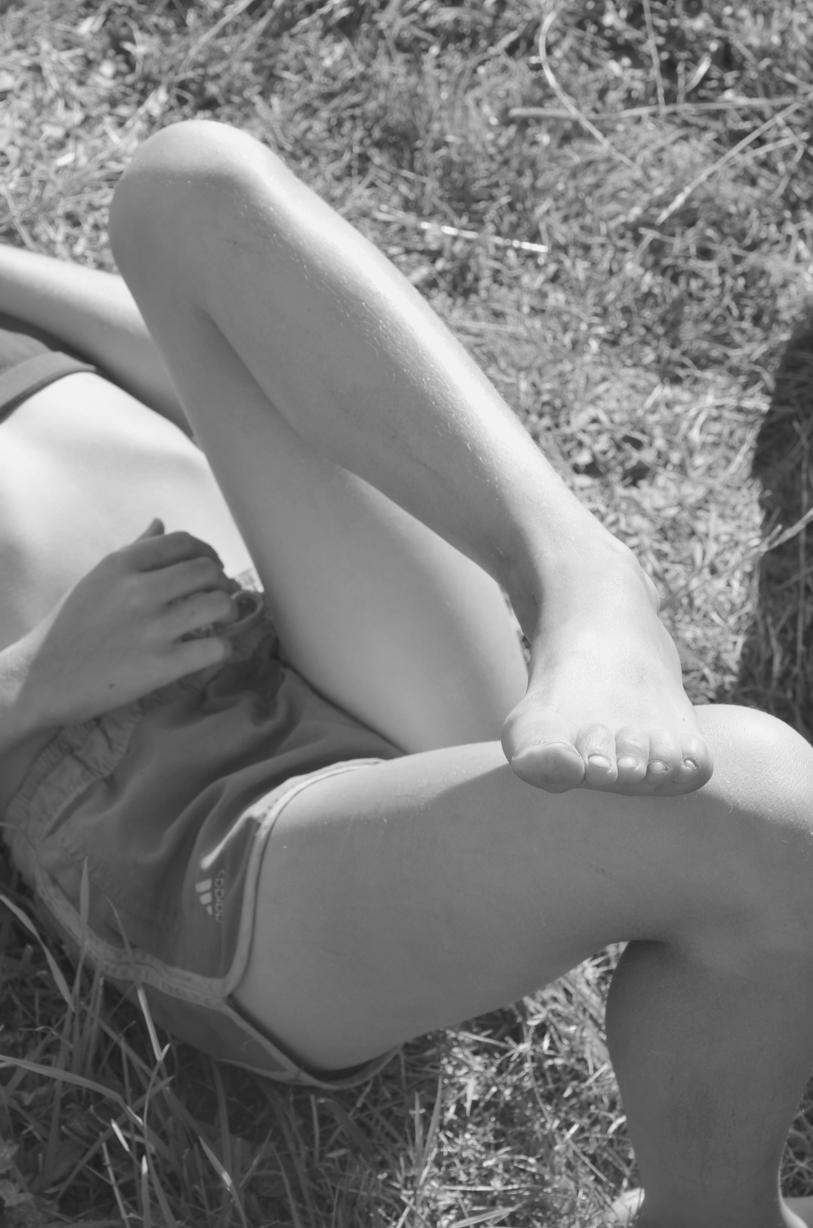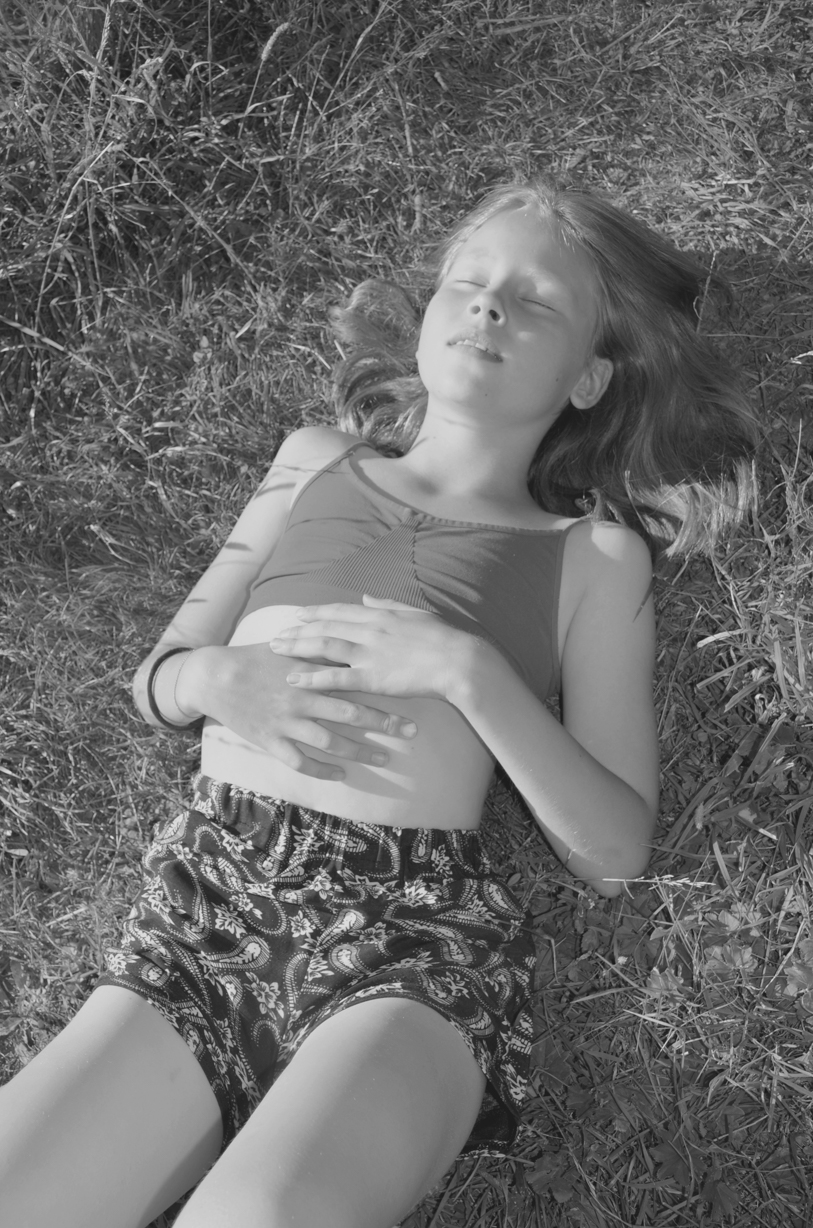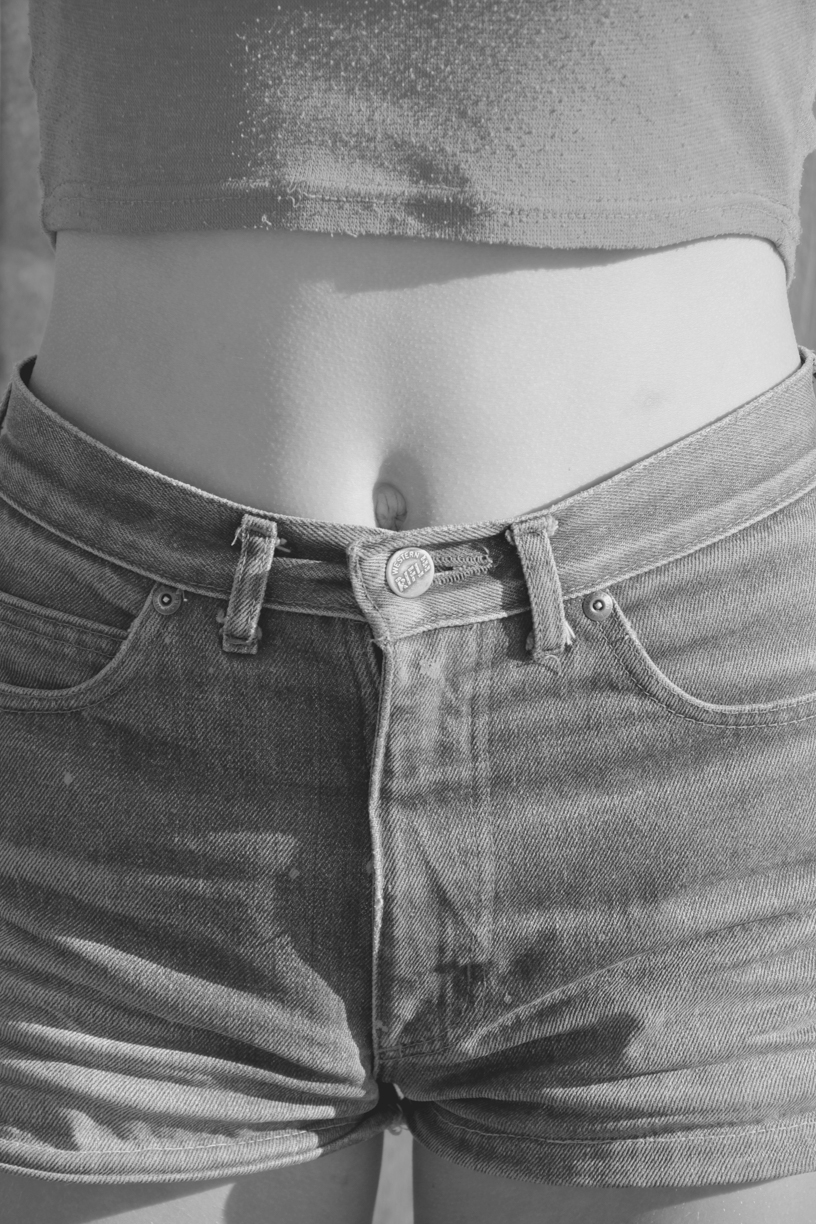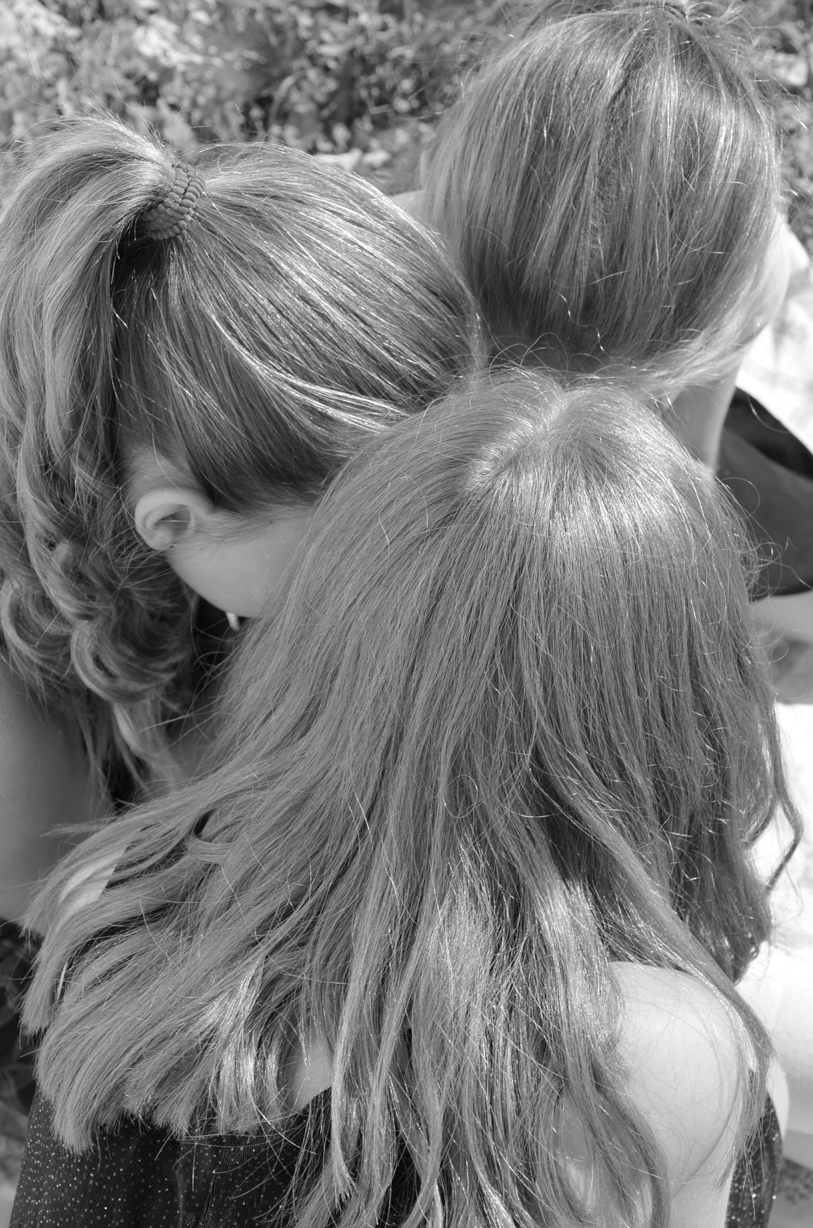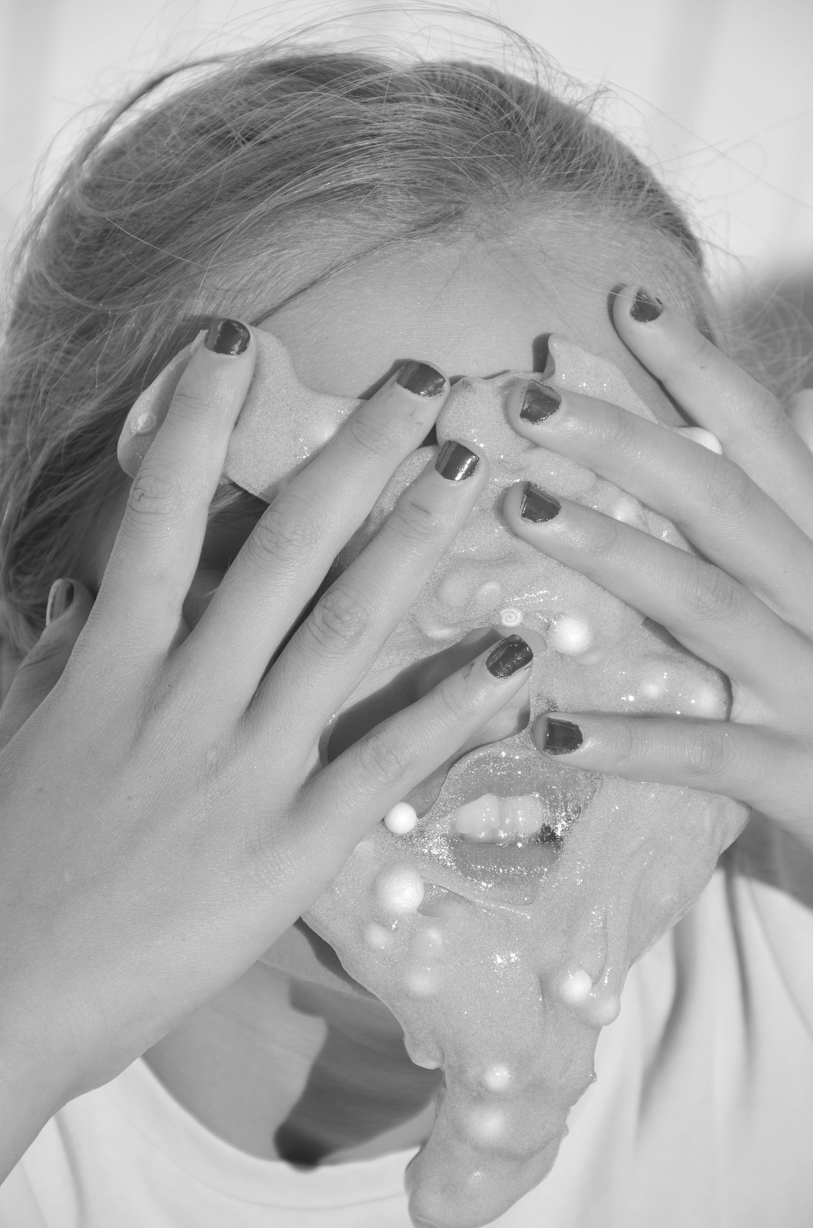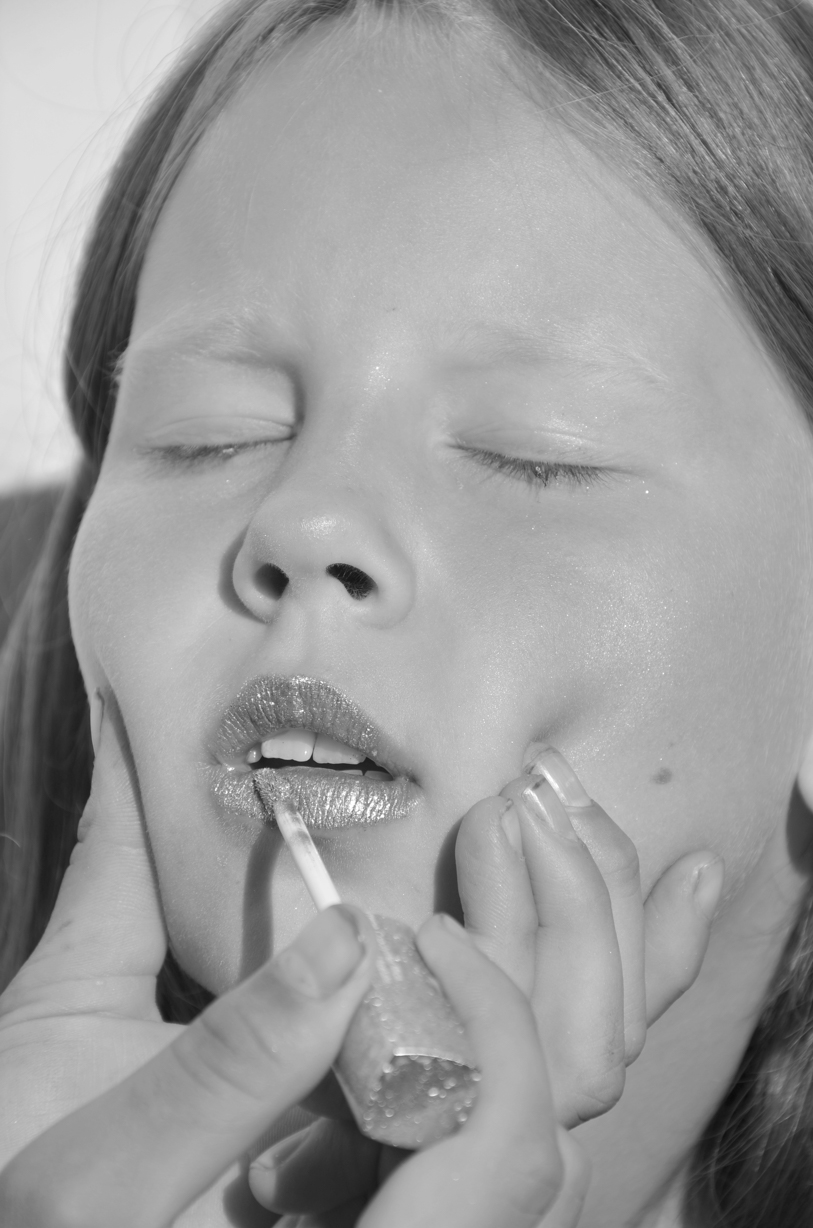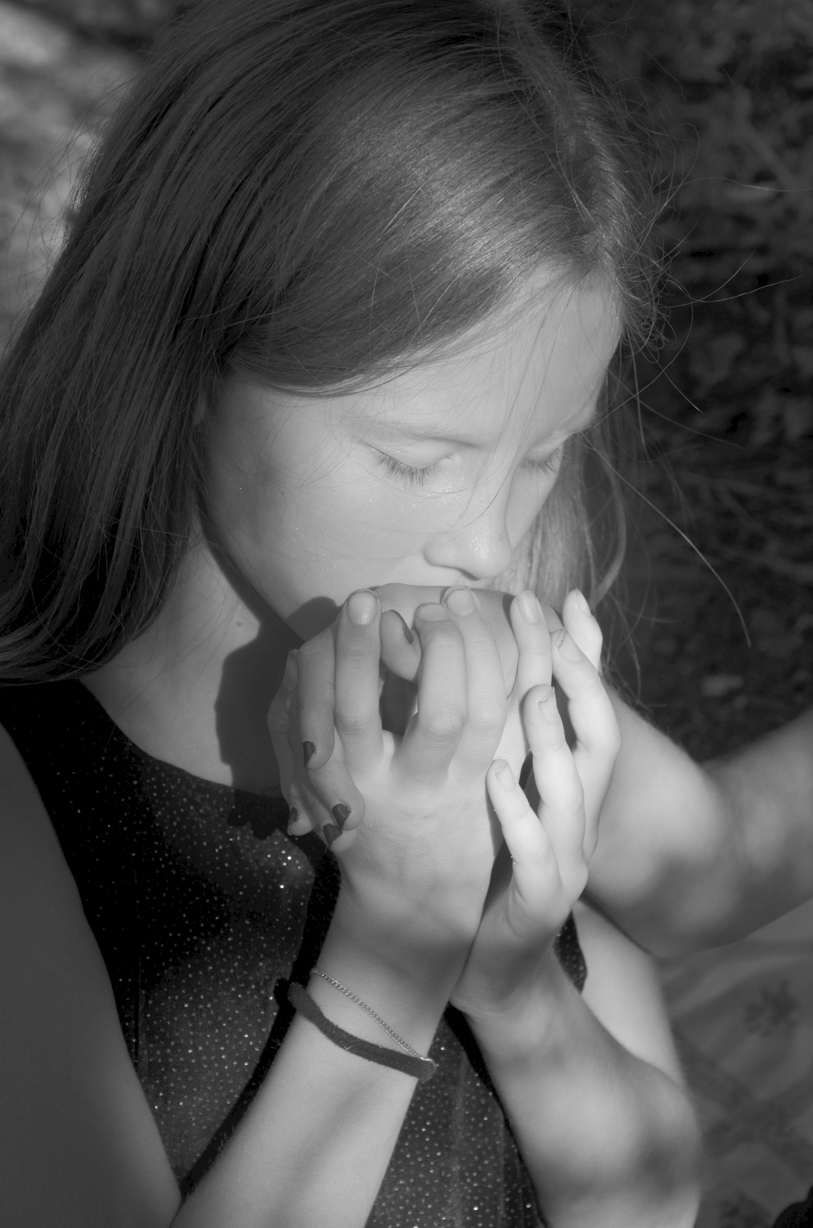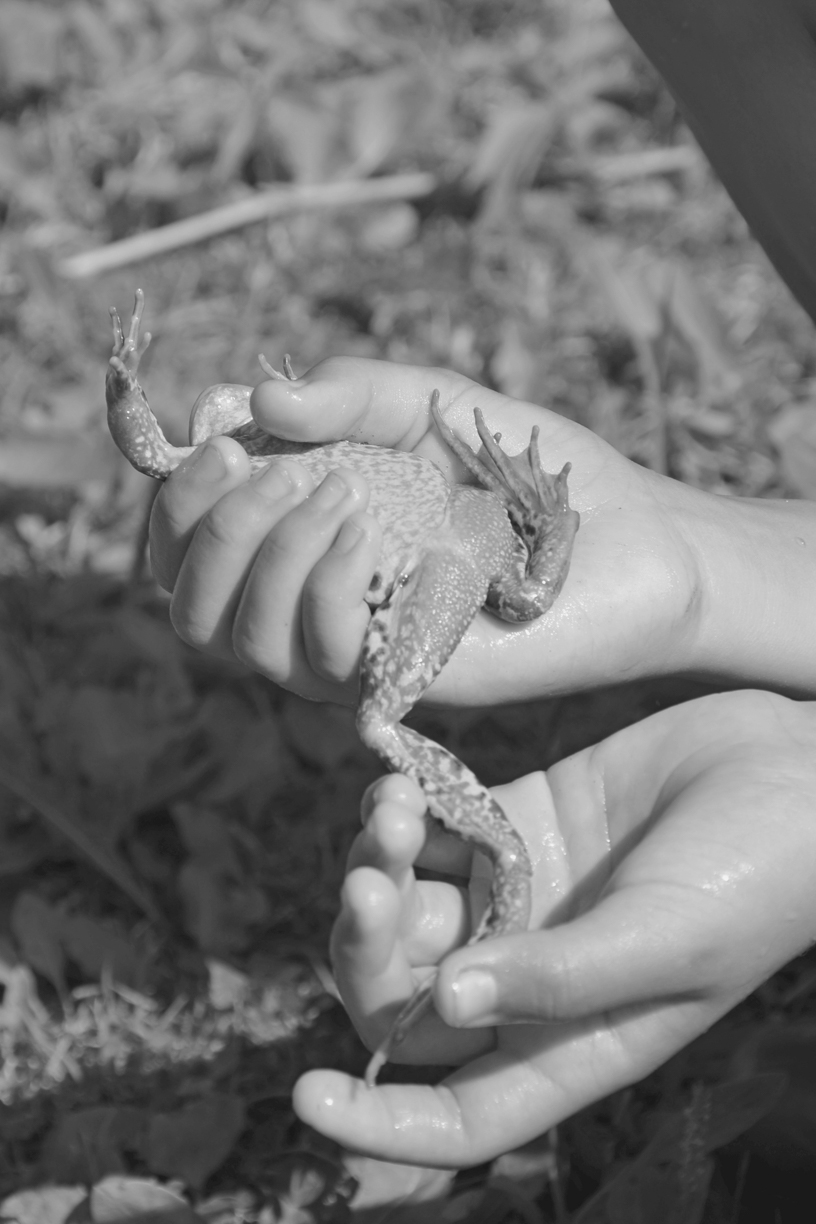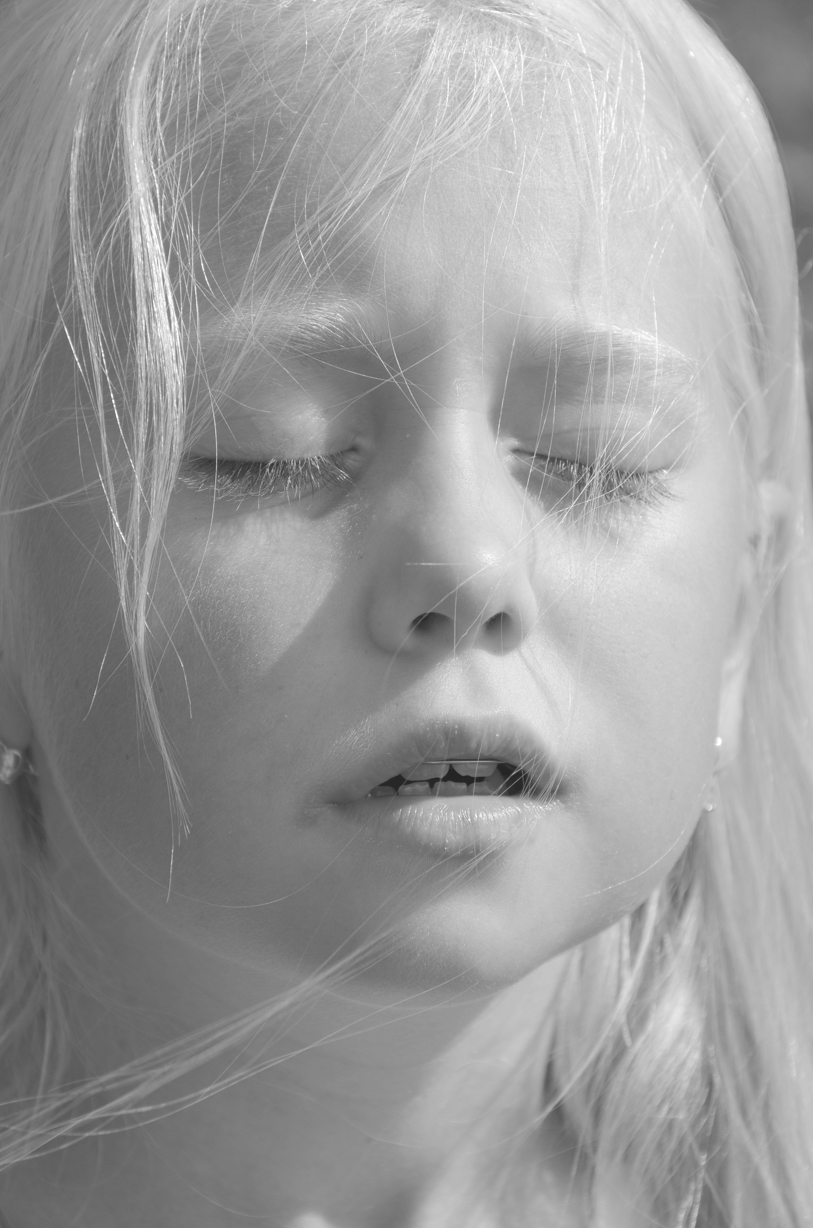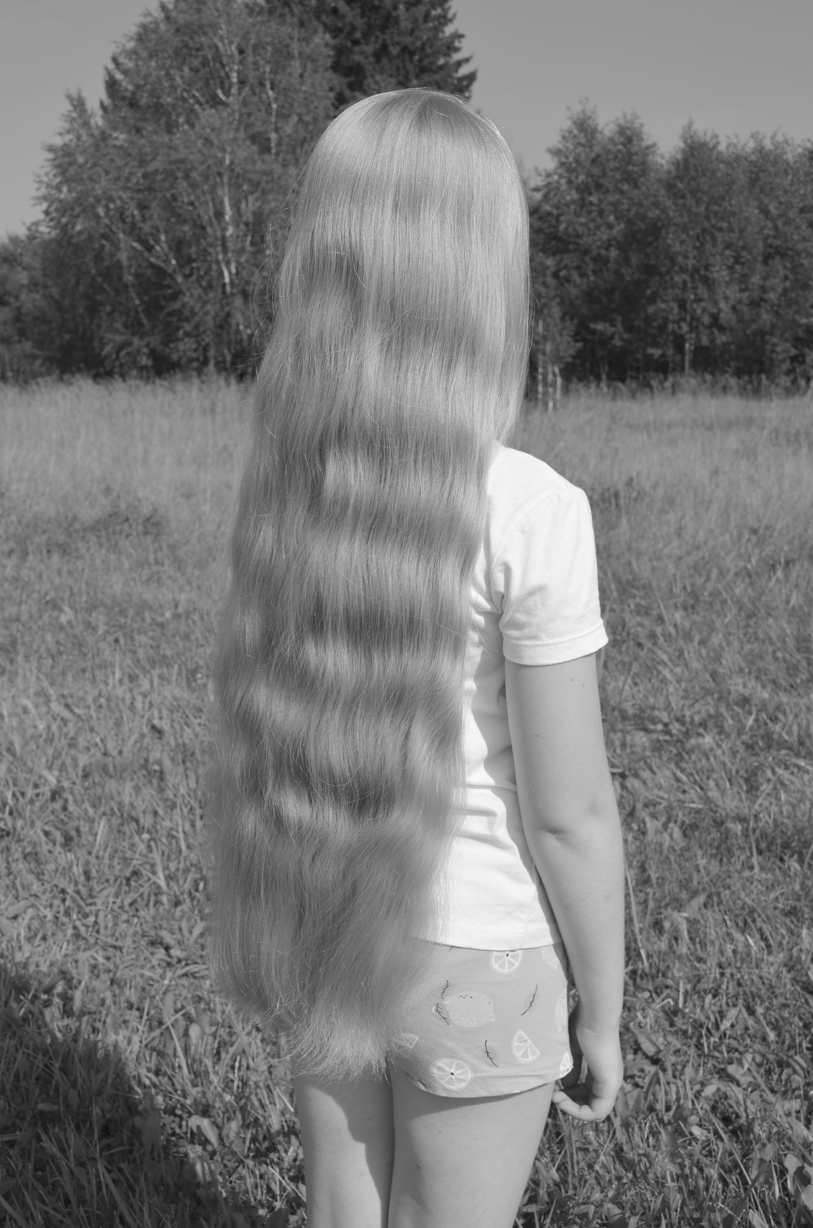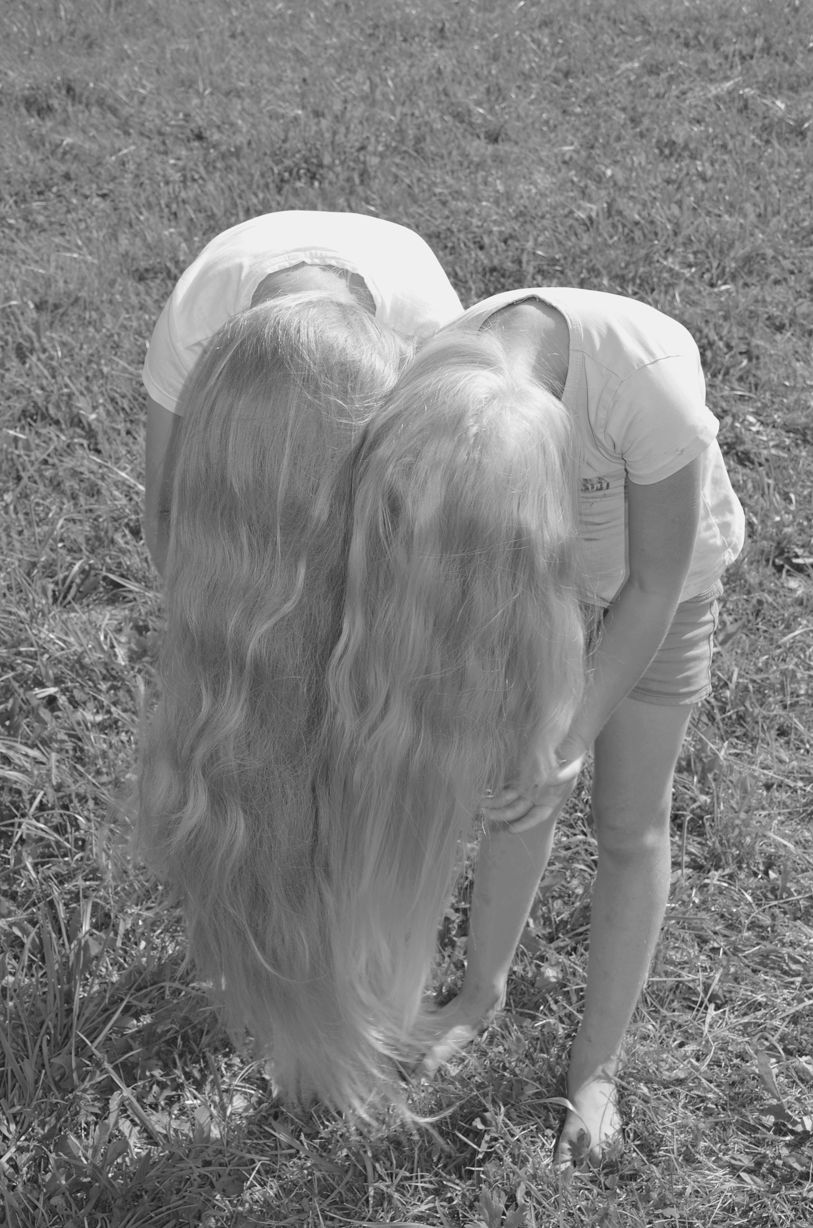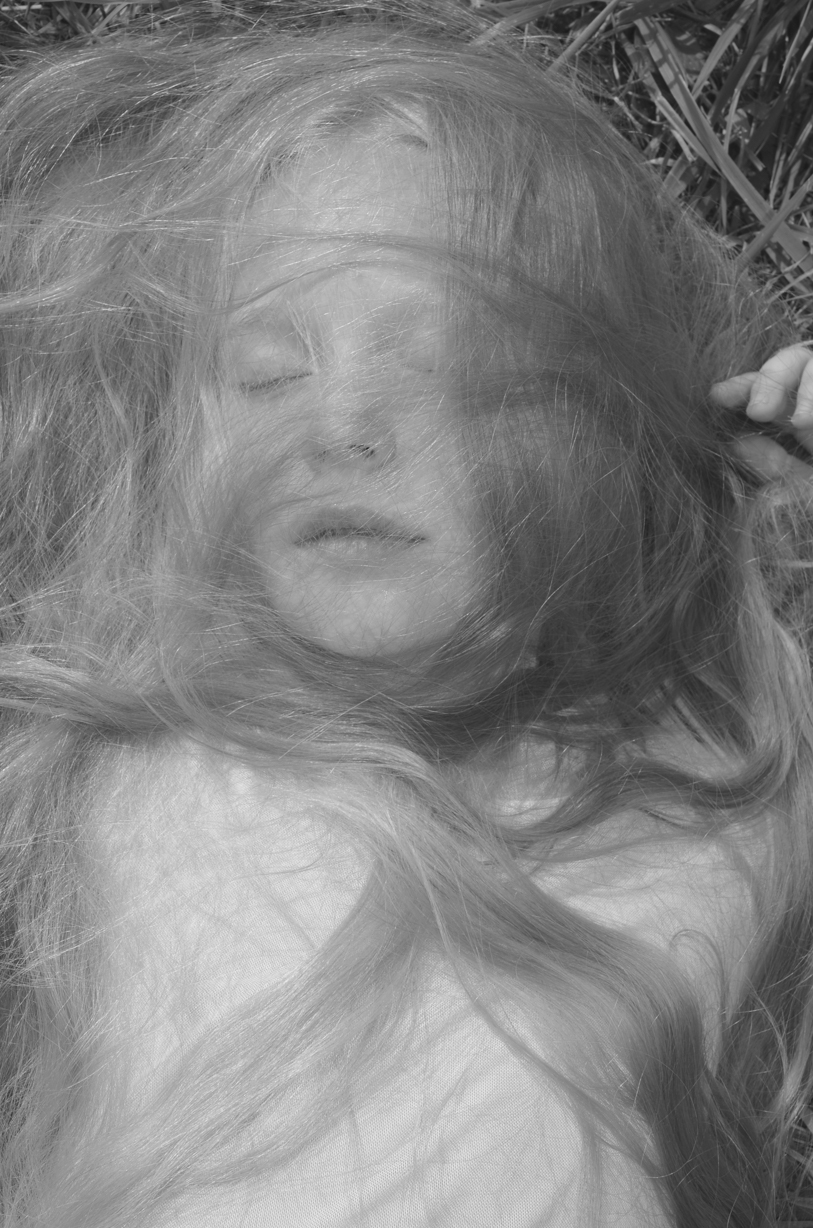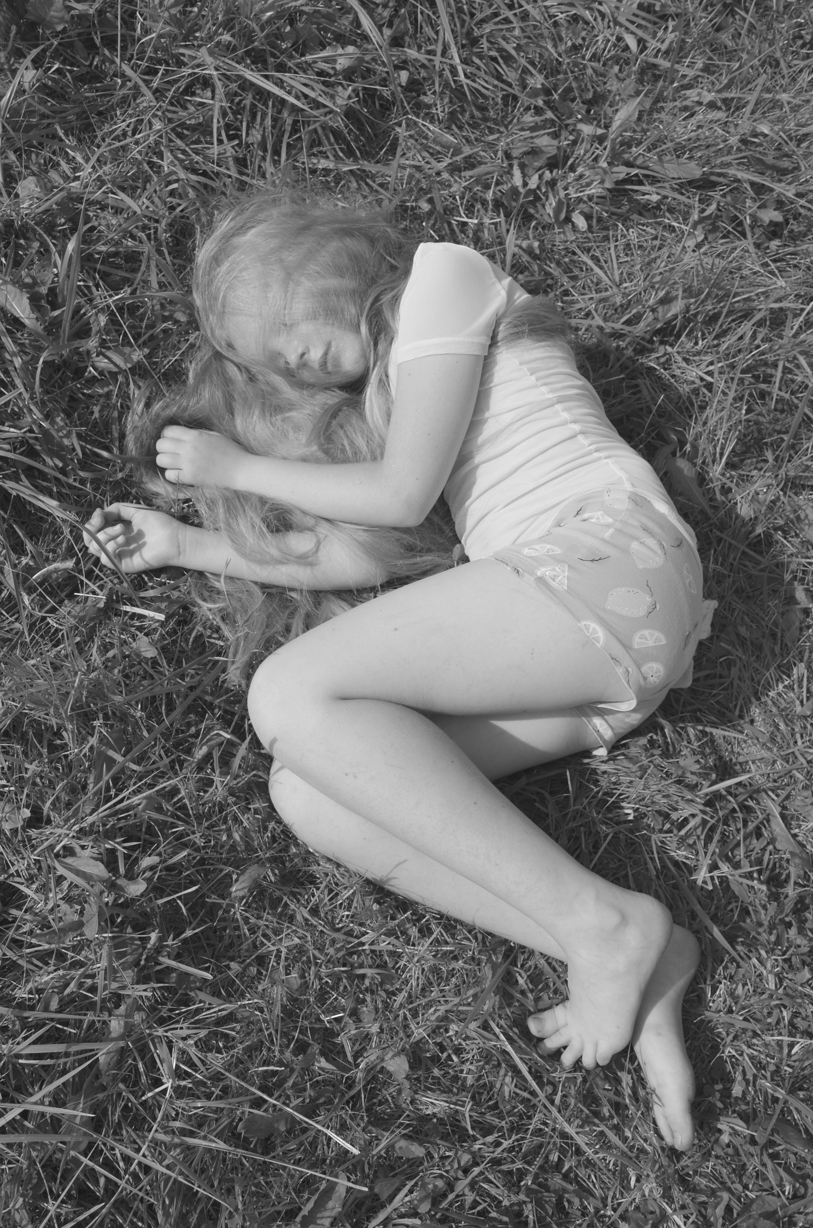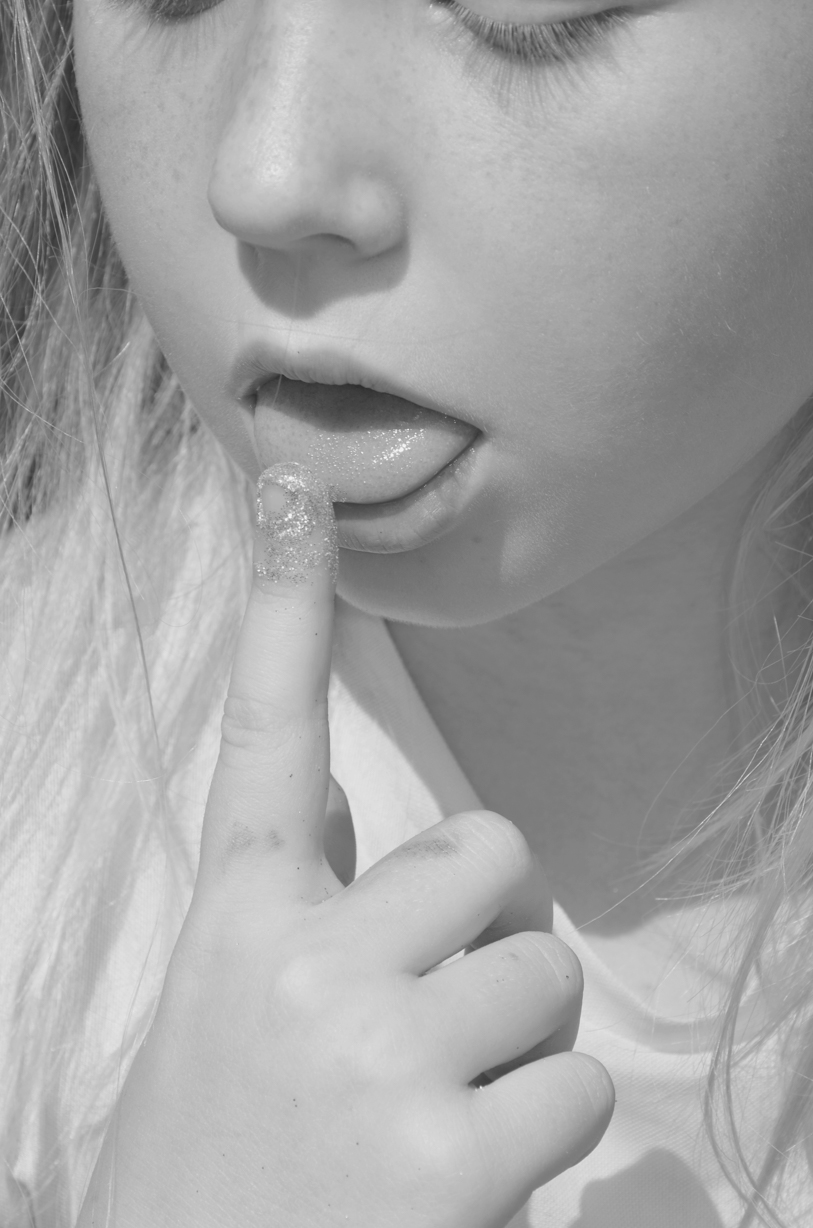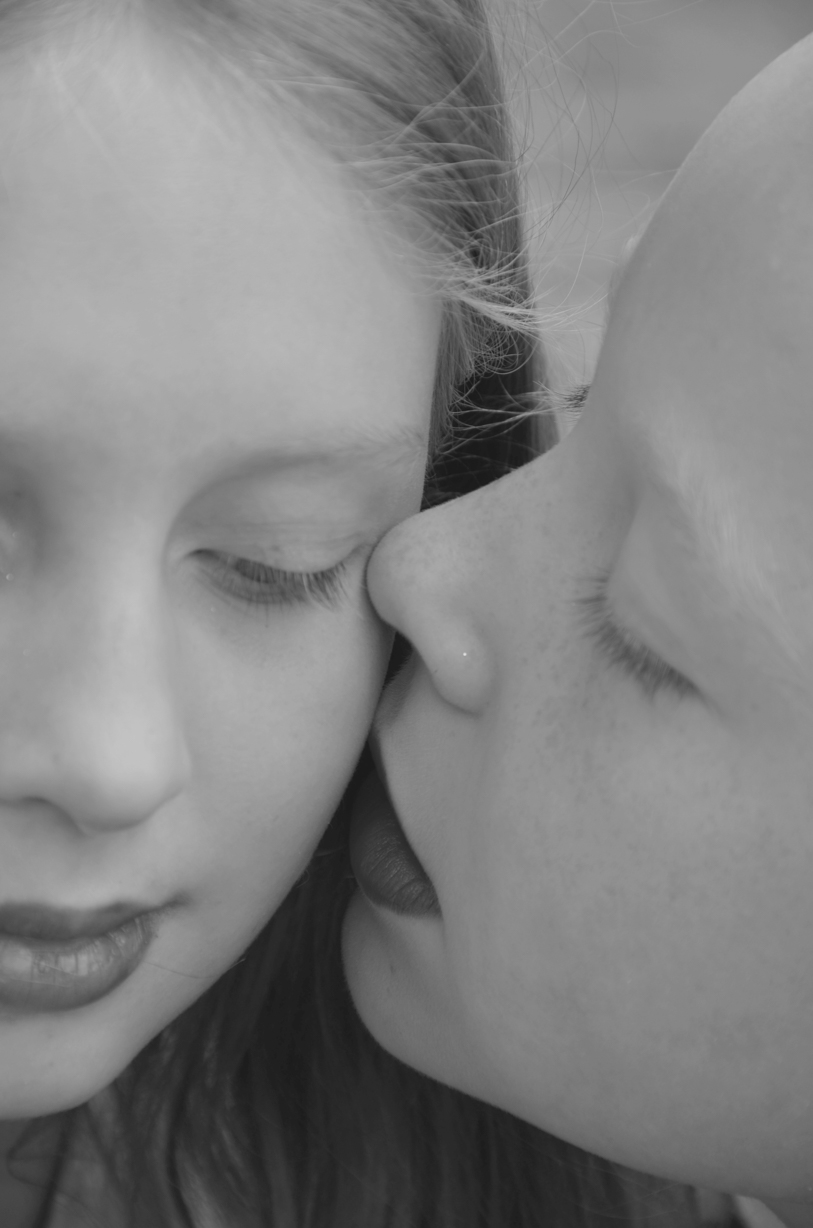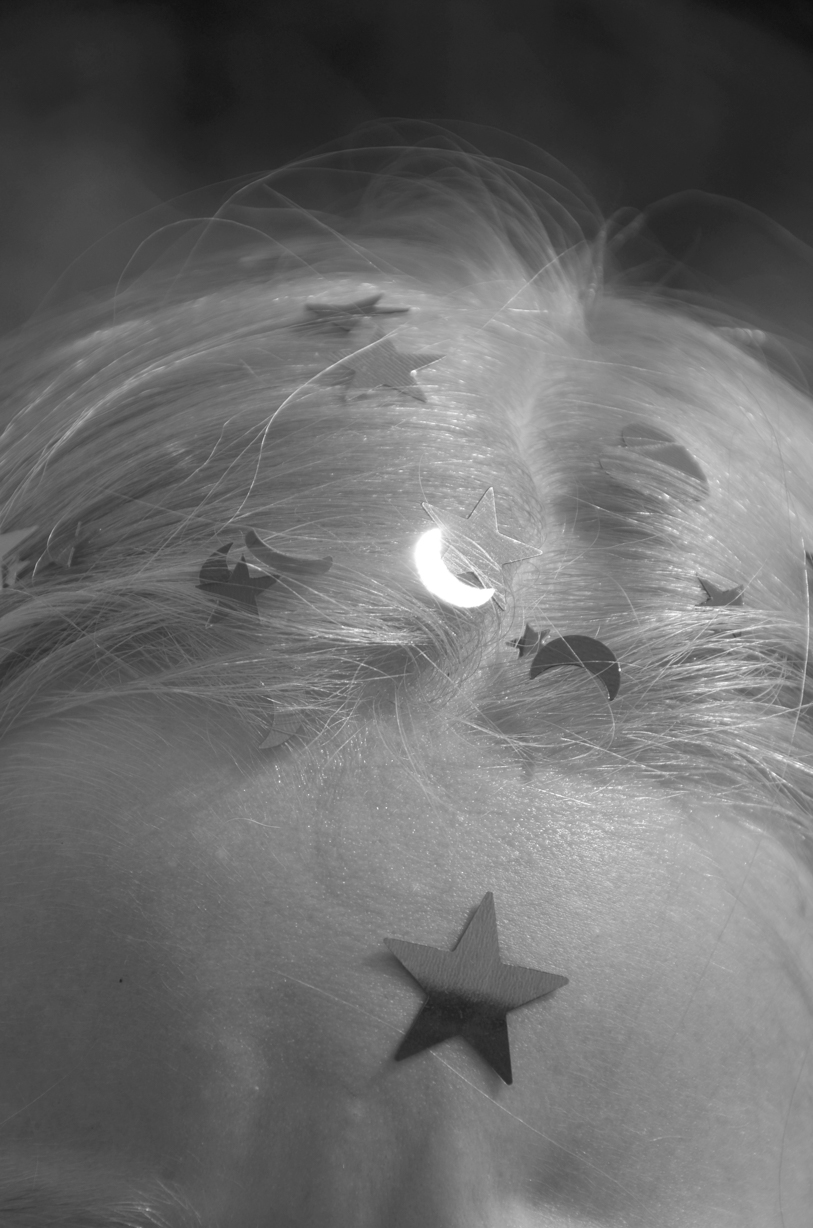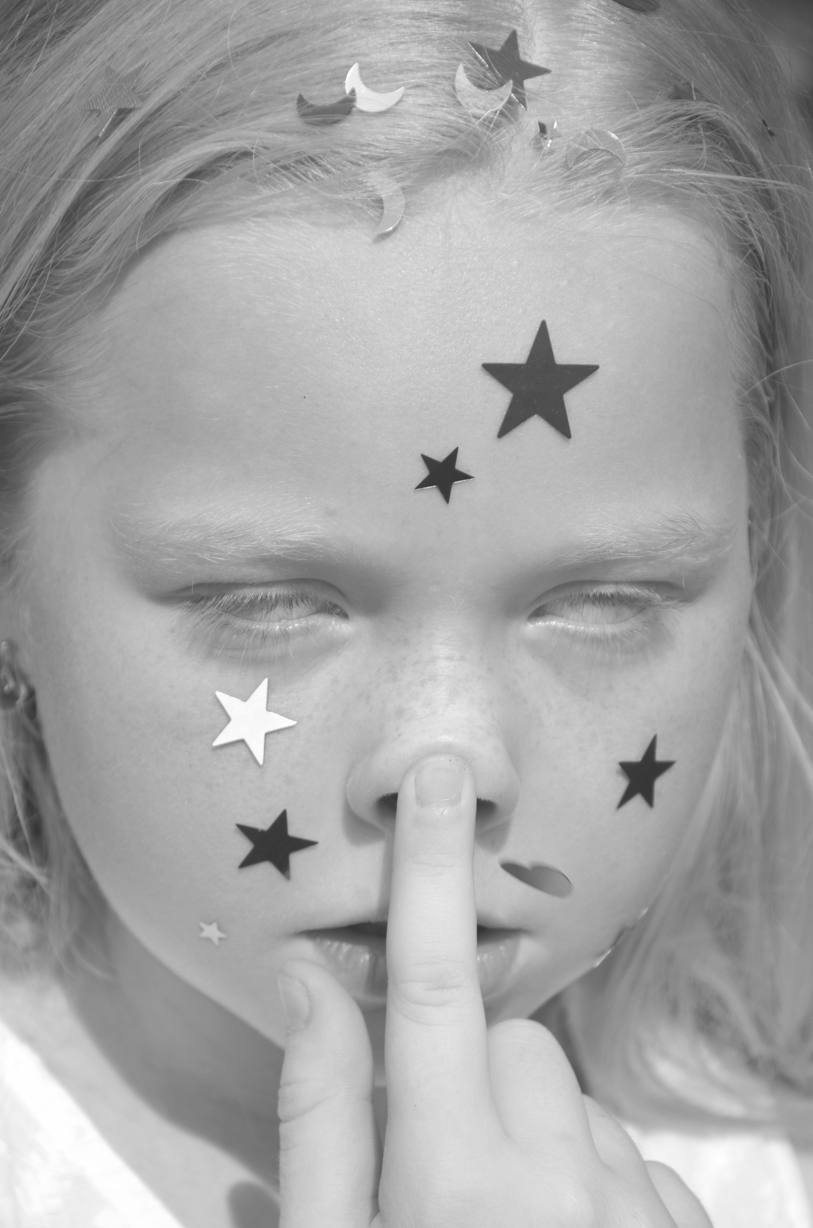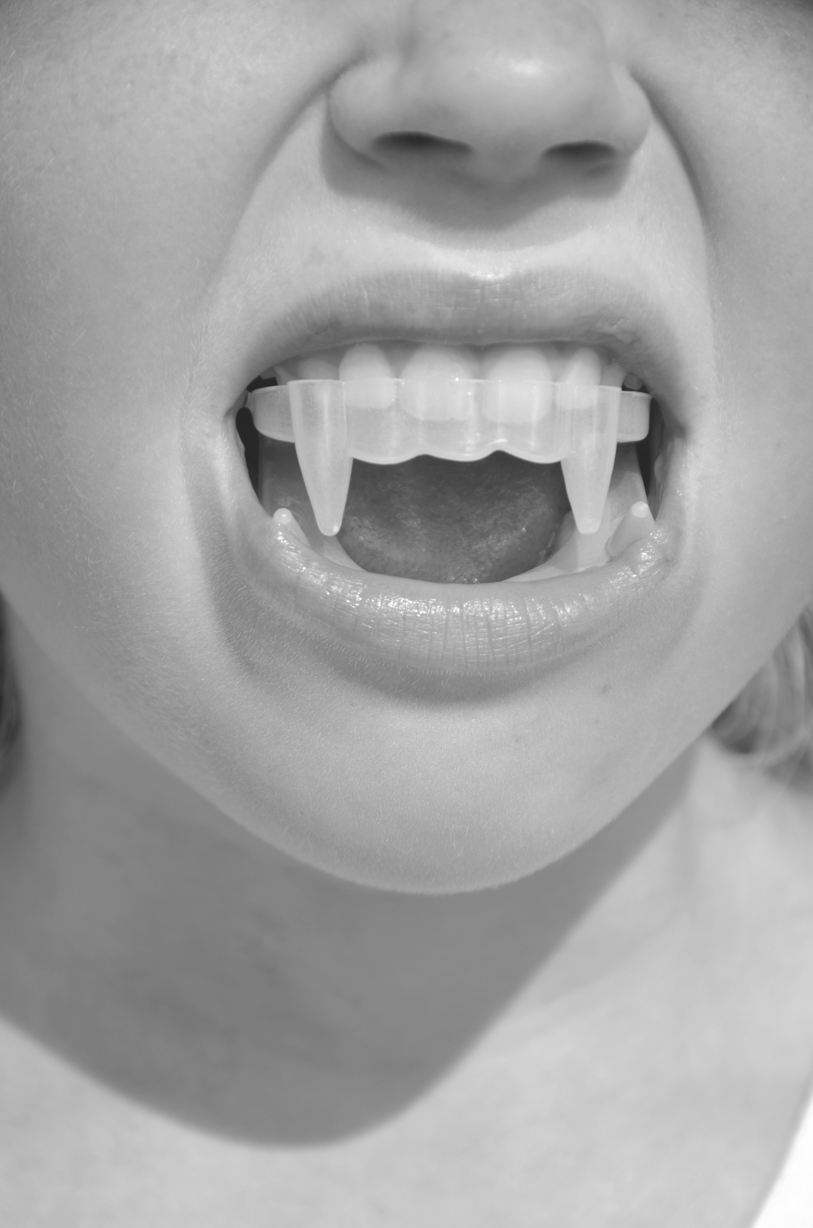In Russian language, the word byt identifies the set of realia sculpting a society, surrounding and permeating its daily landscape: more than a mere, dusty pile of objects under the anthropocentric gaze, byt is rather about the relationships that exist between the person and these objects, the hierarchy which underlies them, the nomenclatures that define them, the proportions of their presence in a determined space-time. The world of Paulina Korobkiewicz appears to be a “bytcentric” world: a sample of fabric, a fabric factory, those who work in a fabric factory in Soviet Lithuania. The author’s fingertip-gaze touches the surfaces giving back to the skin micro-granules of a cosmos in which living humans and non-living things coexist as equals, dancing strands of a collective DNA which displays itself as at once historically marked and timeless.
When it comes to representation of historical memory in the post-Soviet space, debate and controversy are inevitable: the traces of sovietization intersect with the structures of national heritage, giving rise to a wide spectrum of feelings, from the so-called Soviet nostalgia – in its both declinations of “a syndrome and a therapeutic mechanism of healing traumatic past experiences […] and a specifically post-socialist reaction to market changes and to the persistent assault of the capitalist economy” – to a fierce desire to assert a new-shaped identity, most common among generations born during the Perestrojka. On the other hand, the politics of memory in Post-Soviet nations – Lithuania doesn’t make an exception – are gradually changing, making an effort to integrate 20th century “heavy memories” as “undisruptive part of local spirit.
And yet, Post-soviet heritage in Lithuania is not what this work is about, at least not fully and not from a Post-Soviet perspective: in Korobkiewicz pictures Lithuania and the USSR, the two main semiotic systems, interpenetrate elegantly, without disruptions or emotional emphasis, as they are literally semiotic, in the sense of related to the sign, being their co-existence detectable only by the presence on the fabric of both Lithuanian and Russian alphabetic systems and languages; some palpable traces of late-soviet architecture, a typical suburban Baltic landscape, a couple of shots of more contextualized, historically recognizable realia serve as a background for an intimate portrait of a bunch of people’s lives, their work, their facial mimic, their presence in time, their absence in space. If the factory typically embodies collective rituality in human work to the same extent as soviet culture is imbued with widely shared norms, slogans, reiteration, here they both appear to be iconic manifestations of Rituality itself, in its more abstract, primary essence: the rite of living and passing on earth, doing something really human – the wedding veil, a sport competition, the children roundabout – in the meanwhile. The Baudrillard fear of a substantial emptiness and unreality of image and the consequent “metaphysical despair” still plays softly in the background, like an unresolved, mesmerizing riddle, but here we are looking at reality through the post-post soviet eye, which, having overcome the astonished gaze of “after the future” Perestrojka and the controversial post soviet approach, enters a face of all-embracing new realism, silent and sharp as a wave. What at first glance appears to be a work on linear narration, being Korobkiewicz the first-level narrator in a multi-level, intradiegetic collective picture, is actually a glimmering, almost authorless statement of existence: they were here, I am here now, it was like that, I can see this, those were the things that lived with them, that’s what’s left that the eye perceives.
- Kalinina E., Mediated Post Soviet Nostalgia, p.2, Stockholm 2014
- Petrulis V., Facing the Modern Movement: Post-Soviet laboratory of memory, Case of Lithuania, p.9, Kaunas 2018
Article by Francesca Stefanelli
[email protected]
„Utopias are far more obtainable than those “realist politics”, which are solely office heads’ carefully calculated politics, and it’s towards these utopias that we are moving towards. But it is possible that another era has already begun, an era in which cultured and intelligent people will dream ways to avoid ideal states and to come back to a less “perfect” and freer society.”
Nikolai Berdyaev
The dedicated work of young artist Domonkos Varga seems, in some ways, to emphasize the concept coined by the French philosopher Michel Foucault to indicate “those spaces that have the peculiar characteristic of being connected to all of the other spaces, but in such way to suspend, neutralize or invert the whole set of relationships, which themselves designate, reflect and mirror”.
The author’s utopias set themselves up in a posthumous point of view of the dystopic literature of the 20th century. The post-exotic echoes of chameleonic Antoine Volodine seem to reverberate in a far modern-day dimension, which lies on the culmination of unreality. The fragmentary visions correspond to the twine of archetypes and symbols drawn from the past, the present and an imaginary future, but it puts us on the cliff of the familiar unknown with lucid and extraordinary ease.
The utopia harbors within itself a concealed past religion, a nostalgic search for our origins, but the images which make up “Acts of Cassandra” shape a concrete visual imagination, capable of surprising and destabilizing at the same time, as it is full of heterogeneous contaminations, which are the mirror of today’s society. The metaphor and symbol lose their meaning in the breath of archetypes, they enrich themselves, they change, they mutate, they undertake invisible paths, which can be furtively intercepted by some, like radio waves from outer space. Such waves are, nowadays, either omen of what is bound to happen or the lifeline of a geographically destroyed world, of a capitalist economy, which has found a worthy opponent in the guise of a biological entity or rather a vague hope of strengthen a deleterious and sickly sterile period in favor of some sort of form of archaic rehabilitated humanism.
These are some of the infinite interpretations, which the author inspires with contemporary delicacy and impetuousness in the observer’s mind. The firmament, with its celestial bodies, seem to reflect the hymn of a utopic vision of mankind, made of ambitions and contradictions, where a forward-looking optimism activates, but which risks of forgetting that hesitating too much and looking so far could fog up the vision of things themselves, could lose itself in that hypothetical cosmic route, namely what consists in the present, the general scheme of things, but perhaps also those necessary interventions which, for many years, get procrastinated in the limbo of dark matter. As the author says, reality seem to be a subordinate within a fairy tale, the contemporary dimension is compromised at this point. The excessive optimism triggered by the ghosts of the past economy make up what for Byung chul-Han is, in some way, “The society of transparency”, as he described. The prophecy corresponds, man shudders, earth mutates. Domonkos Varga’s work breaks through in the relationship of numerous, inclusive languages full of messages to decrypt, current synonym of contemporary life, permeated by a “democratic” technology, which perhaps brings us sometimes to remember the necessity of a delicacy, which has never been more necessary.
Words by Giacomo Infantino
Translation by Aurora Baldassarra
“In the primary silence vibrates the Word, traditionally conceived as a union of thought and rhythm, language and heart, originating gods, celestial bodies and the land with the creatures that inhabit it.” At the origin of creation, as narrated in a cosmogonic Indian myth, it was Death who had the hegemony of control. “Death wished to acquire a form. Thus it intoned a chant. The chant generated the expanse of the primordial Ocean, whose foam solidified to become land. Then, Death transformed into fire, sun and wind and it obtained a body: the head was the East, the hips were the North and the South; the back the sky, the chest the land. Next, Death wished to reproduce and it merged with the Verb: from this union the universe, sacred books, the meters of hymns, sacrificial rituals, the beings which populate the earth were born.”
These words are narrated to us as if they were whispers in the Bṛhadāraṇyaka Upaniṣad, which is one of the most ancient sacred texts of Indo-European populations. Therefore, Death is not only the omen and the defeat of life on earth, but rather the force of creation, which moves the animals and the spirit. It lives within creation and destruction, within the cycle of things, an unbiased judge that stands above good or evil. It is interesting to notice the correlations between this tale and today’s reality. When Death created the living beings and the “visible world”, from the beginning it forces them to share the places of creation, in which their ability to coexist is not to be taken for granted. What happens in that territory, which is decreasingly fleeting and concealed, as the border line between natural and anthropized is increasingly liminal and “infected”, where do human beings and animals coexist in the same spaces, thus leading to the deterioration of natural balance?
The investigation conducted by Calin Kruse, through a profound journey full of facets, incomprehension, contradictions, confirmations, but especially new suggestions, describes through his images a new reality, which we have often forgotten, and recalls primordial allusions, which at the same time have never been so present.
With his narrative, soaked with an aura balanced between dream and reality, he shows us the paradoxical and peremptory relationship, which has a more brutal nature than today’s reality, and how it relates beyond its perimeter; however, it does not forget the more surprising and unreal aspects. His journey through some Russian mountains immerses itself in heterogeneous landscapes that seem to be coming from his own subconscious, similar to an interiorized weight that mutates into a more concrete reality, a sort of consciousness-raising, which the author feels as he has comprehended how thin the fringe, which delineates the uncertain stability of those places, is. This weight turns into a feeling, but it also comes alive through images, from which it is possible to eviscerate a concrete and tangible reality.
“Nature encounters” seems not to want to reveal the author’s thought or make a judgment, but it rather induce us to a new reflection, capable of entering our intimacy by touching the deeper and more emotional cords. The evoked archetypes remind us of our life in this earth, of the fact that we cannot deprive ourselves of the fundamental structure surrounding us. These images evoke our deep fears and nightmares, they propose to us a drastic comeback to the factual reality, they whisper to us that coexistence exists, but all of this lies in the natural scheme of balances and, therefore, perhaps having more respect will be enough for us to be able to find, in a collective form, a both civil and spiritual comeback to a world which seems increasingly farther form us and so archaic.
Words by Giacomo Infantino
Translation by Aurora Baldassarra
In the Book of Daniel, King Nebuchadnezzar has a dream where Lusitania—the ancient Roman province comprising the territories of today’s Portugal and Spain—was “the last kingdom of God.” This kingdom was the end of the earth, finis terrae.
In this series, millennia ahead, Michele Palazzi tries to convey the somber charm of these same, westernmost lands of Europe, the outskirts of yet another empire, now bearing the signs of decay.
It appears that the Eurozone’s economic and administrative centralization has not only materially transformed formerly rural landscapes, but also their super-structures: their signifiers, values and affects.
In this multi-chaptered project, Palazzi aims to document the conflict between the glorious past of the Mediterranean and its present: an indeterminate space, confused by its own history and seeking its alternative re-tellings.
.
On Cape Finisterre, ancient tribes brought offers to the sun, while sterile couples copulated on sacred stones—seeking the divine in their futile attempts to conceive.
The way solar rays hit the coasts or the transparency of the celestial vault once determined psychological attitudes and the way narrative patterns unfolded in different communities. The region’s mythical past is innately entangled with the past of the Mediterranean Sea itself.
In the Mediterranean, its people have erected monuments to faith and superstition, to greatness and vanity. Great authors have tried to unveil its mysteries, describing its phantasmatic past that transcends time. Only a sophisticated tune seems apt when alluding to its eternal spirit.
In Mediterranean Breviary, Predrag Matvejević writes that the water renewal of the Mediterranean basin takes more than 100 years; its salts remain in motion for much longer. The exchange of minerals and liquid of the Mediterranean alone outlive its onlookers.
.
The actuality of the Mediterranean soul, shown in these pictures, is made of haunted hills, rocks that lose any distinction and memory in the protocol of the coast, widows, and anchorites.
The Southern European heritage seems to live only in our dreams, those where familiar landscapes are dreamt, places where we have never been but feel like they belong to us; maternal carsick bodies that incite our conjunction with nature.
What these photographs liturgically evoke is that mystical aura of something that has always been there and continues to exist. While looking at them, I imagined the babble of priests, debating the merits of a brand new sacrament, inside an isolated white church—I like to imagine—a sacrament that establishes the eternal commitment of human beings towards the landscape that means the most to them.
Words by Cecilia Nobili
Anna Vogel (°1981, Herdecke) combines own and found photographic images which are altered through digital manipulations and graphic additions or deletions. Using varnish, acrylics, pencil, ink or pigment, she adds subtle touches to the surface of the photographic image, such as a carefully worked out, vacillating play of lines. This labor-intensive, slow process infuses her work with a meditative and timeless power. It creates a diffuse representation of the image that exists in a transitional zone between reality and optical illusion. The work seems familiar and yet strange; it exerts a great attraction, yet also evinces an unmistakable feeling of remoteness. It calls into question our perception and the ways in which the medium photography can function.
The subjects Anna Vogel addresses in her work hiver on the boundary between biology and technology, between the past and the future, between destruction and creation. The photographic images alternately present cultural and natural elements. From historic temple ruins and contemporary, traumatic events to enchanting fragments of nature. Living organisms have been an intrinsic part of Anna Vogel’s visual language since the very beginning of her artistic career. Through her work, the artist questions the history of man and culture, as well as new technology and ecological, futuristic architecture, amongst other subjects.
Words by Sofie Crabbé
[From the dictionary,
Figure: the external appearance definable by description or reference … or also, in physics, the particular aspect with which certain phenomena occur.
It would seem, the creation, outside of us, of something that manifests itself in a form. Whether created or modelled by the individual, or phenomena that manifest themselves, by unknown forces. Imagine them far away, which mingle in the dark, like apparitions. “I see a figure there, on the horizon, I can’t distinguish the shapes …”
Or inside, as internal phenomena, in the mixing and changing of all our emotions.
Figures appear, indistinguishable. FORMS. Ghosts. ]
There are sometimes intermediaries between us and antimatter
images of the dream are presented to us as anti-material, they are easily lost, if you don’t grab them immediately,
they fade more and more, like an image that burns slowly.
Yes…. they can resurface, re-emerge, after a long time, but in another form.
If we do not immediately recognize that it is part of a past dream, it presents itself to us as a vision, hallucination, as a memory perhaps never experienced but so familiar … intrusive, impetuous or light.
If you try to chase these visions with your thoughts it seems impossible to give them references, they flee from the present, they cannot anchor themselves to anything, you continue to stare at the image and don’t have a foothold. As if it were a situation in which the mind (your daily mind, used to the same works) is fleeing. A memory that you are unable to recover, (as oblivion), which escapes understanding.
But that can also flow, a sensual flow, without stop, that slowly dissolves and finds itself, always different.
Sometimes we need some mediums to reach those almost forgotten images, almost vanished, but that they still live in us in the form of impulses, of visions, if not of poetry. Sometimes these means, to recapture a missing, absent image, are found in art and thanks to art.
Here, those like Nasos, try to be one of these mediums, messengers of antimatter. The intent is to represent what is normally impossible to make appear before our eyes, in such a lively and tangible way (if not with a significant effort of imagination, but that can sin of artifice and fiction).
We risk deceiving ourselves. With photography you already know that there is deception, illusion, and it is easier to rely, it is more comforting to believe it.
The thing I like about Nasos is that in his photos there can be no reference to an episode of reality, there is no detail that can trace you back to something that belongs to someone, someone’s biography, history, yet it touches and enters your intimate.
It gives you the impression that someone has been there, and has only left a trace. He is running away or has already escaped, having marked and sunk his cheek, his chest, his body, on living clay. Photography can show, tell and deal with an absence. “What was,” says Roland Barthes. It makes you imagine and see that there has been something there, even where there is no trace of anything.
However, compared to cinema for example, it often cannot follow the story of a subject that tells about itself, moving in space. To do this, in photography, you can collect and concentrate all the possible details in a frame, wether found by pure chance or thanks to a desired composition, and the photo will dress up as a representative of years and years of life. However, photography may not exactly follow a moving subject, but may instead show the moment when the subject, the ghost, is leaving … all concentrated in a juncture of a second. like a punch in the stomach. exactly as it happens in our soul. We feel much more that moment between full and empty, one can say.
Let’s think about street photography, where the movement hits you and can get you in the face with violence. Only in one frame can an infinite amount of information be captured, things are moving, going away or arriving. But along with the movement there are a thousand other features, a thousand information, which may torment you for months. For how much stuff there is and it moves and who knows where it goes a character comes, a look that pierces the screen, or if there isn’t, you can feel it the same. Because there are a thousand other elements, there is SPACE. In the absence of space how do you do it? This is the magic. In our dreams, in our unconscious, everything emerges and moves but has no space. Something has been there but has just gone away, how do I get it back? If I were a good painter I would try to paint it, but you could be frustrated for life for not having done it well enough, just as you wanted.
Nasos photography gives us this beautiful attempt, to give us movement, in images that try to escape, not to be there. Just like our mind, which runs away and seems unable to bear this weight. The weight of emotions or visions that come out of that underground world. And here the eye runs away, the eye falls where the form escapes.
Where the line deforms and seems to coincide with our interiority. Where we are stain, tear, stroke, blur, pieces of bodies, fragments, sharp, altered, raped, holy, ambiguous, shiny.
Very Baconian, his intent to deform reality to make it more real, closer to our interior, closer to what we feel when something happens to us. Without the need to illustrate, or tell, or show, as illustrative art does, where everything is so composed and already finished, but rather, deforming the bodies, making everything more ambiguous and at the same time more alive, carnal, or angelic, imaginative.
The shapes are confused, and they may seem to you to be something else, quite the opposite, they travel. But at the same time they emerge so precise, like x-rays of sensations, embodied in emerging figures from the dark in flesh and blood. You can imagine their beautiful candidness, plump and polished like statues. Like after a dream, that still remembers a tactile perception, perhaps of the skin, of its consistency, than remaining much more vivid than other things.
We carry these martians, brothers, lovers, friends, figures never seen, unknown.
If we carried these visions, our dreams, continuously in everyday life, as hallucinations, without transforming anything alchemical, chemical, physical, and artistic (as happens with photography) would be only destructive. Unable to communicate what has been seen. It is necessary to create metamorphosis and transformation.
Finding a way to be able to give them as fragmented, as everyone’s internal sensations are, is to create magic and high forms of alchemy. Because they become communicable and shareable. So, play with our visions, with everyone’s visions: sensations recoverable by each of us from a fragmented memory that needs listening.
Like in the morning, when we wake up …
as in the dark where you seem to see nothing
a vision, but imprinted
on film.
I found this sentence written some time ago in my notebook, it never had any sense and logic, and who knows if it will find its place right here: “An overexposure of an under exposure”.
I just know it has a nice sound.
Article by Francesca d’Alessandro
[email protected]
Translation by Walter Borghisani
www.walterborghisani.com
Pauline Hisbacq and I have been friends for ten years. Our photographic correspondence has begun at the time of our installation ‘Cadavre exquis’ at “Le Bal” in Autoumn 2019, during the Rolling Paper festival. Each one of us being on a different photographic path, we both create images out of time, fascinated and nourished by other images that we cherish. I’m delighted that, through this interview with Pauline, I’m able to talk about her beautiful book Amour Adolescente (chants d’amour) – Adolescent Love (love songs) published by par Editions Le Rayon Vert.
1/This series is about love. In Amour Adolescente (chants d’amour) the repetition of the word makes me recall the greatness of this feeling but also the adolescence. Could you talk about this ideal displayed in your work?
Yes, there is love and there is desire as recurring trajectories in my works.
In Adolescent Love (love songs), there is this very particular moment where the mourning, the loss of love, the deep pain of love, are blended to the rebirth of desire, to the vitalized libido, to the reproduced desire for the new bodies. This is death and life at the same time. There’s no more love, it leaves its place to a vital momentum, taking its source within the ashes.
By using the question of adolescence in the title of this series, I had the objective to enhance the unprecedented dimension of this universal feeling. The first love, the adolescent pattern are concepts that can be experienced late in one’s life. And it may not last for long. I wanted to express the innocence and the romanticism of this feeling. It wasn’t like I gave it a certain time or date, it was rather an affirmation of its naïve, entire dimension.
In a general way, love is what interests me the most in life.
2/In this late publication you get away from the party of a band (The beats) or from a night trip (Holden) in order to tell us the relation between two bodies, two human beings.This song is like a discrete declaration for the loved one. Could you tell me how did the transition from a group to a couple took place in your work? How was this passage of love and its intimacy interpreted by the others who were present in the room?
I think I always work with feelings that concern me in that moment. For a long time, relations with the group, with the party scene were annoying desires for me. I needed to explore this photographically to understand where I was situating myself intimately with or next to others.
Then there’s been a massive rupture in my life. I had to make a clean sweep of most of my sentimental attachments. I also protected myself in a new environment. I needed to work on this in images. This leaded to two concurrent projects: The Adolescent fire and Love (love songs).
In Amour Adolescente, it’s not finally a love declaration but a declaration of a rupture. It’s like turning away from the loved one. Although it’s really about desire and libido, this is an essentially solitary project. It’s about trying to recall in images, in a choral and deconstructed way, the disunity, the wave in the soul and the body on fire. The couple doesn’t recall this. This is also a work on memory, on mirror images (a column is a fallus) and on images that evocate desire. The desire is really a matter of landscape. It’s a world, a projection which draws itself, with its geographical and rhythmic characteristics (I’m not talking about politics or sociology!). This is a visual recall. This is what I tried to compose in Amour Adolescente (chants d’amour). Every image is an interpretation, the symbol or the memory of something.
3/In Amour Adolescente we find all the patterns you like (the decorative, the flowers, the marble, the skin abrasion…), fertile also for the other series in progress or the ones that are yet to come. Are these songs the inventory of attractions for you? The moods we go through when we are in love? Can you talk about this?
It’s true that you can find all the patterns that I like in my work. The term “inventory” is a bit distant but yes, maybe this is a very personal inventory of my attractions. But every pattern happened to me, I didn’t search for them There was a kind of wandering or flirting in the way that I have found and interpreted these images in this project.
4/Do the attraction and its intensity belong purely to the adolescence?
I hope not!
5/Is it your attraction for these bodies or the attraction they have in themselves?
I think the word adolescent in the title causes a confusion. I don’t talk about adolescence in this work. I use this word to give an epiphanic character to the images.
The adolescence is in fact a moment of life that fascinates me, because I think that it’s a big moment before the fall in the maturity. The adolescents still live day to day. Their “innocence” attracts me a lot. I really like looking at them, because of the beauty of their faces and their behaviours “to become”. I also love the fact that they have their own world. Before or after the adolescence, you are excluded.
6/The images that you create or collect appear to me as they have the power of reassuring, soothing. Do you think that the nostalgia is a way of protection against our violent and grey world? Is this your way of building a space in which you feel good? Protected?
Yes, the images that I collect or I create do have the primary function of charming and soothing me.There is something very domestic in the way that I work. They are always internalised images. It’s good to imagine that these series are my shelter. I love this idea!
The nostalgia, I don’t know. I think that it’s the color through which I see things. My love for photography has started with family photography. The works that I adore are family photos: Shades of time of Annelies Strba, Ruth on the phone of Nigel Shafran, and they are rather melancholic. My tool is what was used very ordinarily by the families when I was a child (a silver, compact point and shoot).
7/Adolescence is a recurring theme in your previous works. Marked by Suzanne (Sandrine Bonnaire) in “To our loves” by Maurine Pialat, you stuck a lot to a young lonely girl figure, exuberant and adventurous. I feel today that this subject slips into the concept of family. The nest of the images that you’ve built so far (The fire, Love Songs…), does it in a way shows your family as a succession through the stages of life? And do you wish indirectly to include this new notion in your work?
Certainly. I noticed not long ago that my work challenged the idea of cycle, of passage.
I photographed my daughter a lot ever since she was born. Maternity is a new dimension which has given new perspectives to my photographic desires, a new landscape drawing itself.
It’s been a while since I take photos of young mothers with their babies or toddlers. It connected, for sure.
8/Do you think about Nina’s adolescence in this perspective? Would you like to record it? Do you think that this period would be the moment of presenting another adolescence, as her mother?
I don’t imagine Nina as an adolescent yet. I take a lot of photos of her, since she’s born. I wish to keep track of her evaluation. For the moment, I’m interested in childhood.
Yes, I really want to record her phases. This is an old and long term project. I would like to record short talks filmed with her, periodically (maybe once a year?), ask her questions about her life, her desires, the meaning of her life, ecc… She’s beginning to talk so I will definitely start doing it!
9/In your ongoing researches you look around and read about “l’amour courtois”. How do you consider this form of love versus your description of the adolescence? Is gentle love something that belongs to the adulthood?
I started my researches on gentle love at the same time that the composition of Amour Adolescente (chants d’amour) started too. This was a way of poetising this moment of rupture that I was actually living, in order to transform it into a photographic “work”. I’ve especially read theoretical texts about gentle love, as background music or imaginary landscape.
In gentle love, the desire and the art of seducing are far more important than the consumption of love. The journey towards the other is much more beautiful than its resolution in the unity of the bodies. It’s relaxant. It’s an aesthetic and moral gesture. I love its disuse and its “autonomy”. The gentle lover is at his climax even if the person he loves doesn’t ask for it. The solitude is not its opposite. It’s interesting In this sense gentle love is adolescent! When I was an adolescent, I really preferred the silent love period in which we’d done films about the person who attracted us, rather than the couple. In gentle love there is no couple, because the woman is already married.
The patterns of gentle love are also a source of inspiration for me: the medieval, the decorative, the floral, the hair as feminine attributes…
10/In your series we find a relation to History namely of Art (Ancient, Middle Ages, Renaissance). When you photograph bodies, do you wish to include them in this History of figures/forms? Do you think that these gestures and inherited bodies are universal and thus, they exist in each one of us. How do you reveal them?
It’s an unconscious journey. My work is nourished with the history of art without being intentional and pretentious. I work in a sculpture museum, I regularly take photos of the sculptures within this frame. This infuses naturally my artistic work. On the other hand I don’t see here a universality. This is a personal taste.
I also think that this is a sort of method. It’s easier for me to work with sculptured bodies than human bodies. I feel more free, less shy. Going through the sculpture allows me to make my marks to look at human bodies afterwards.
Interview by Marie Queau
Translation by Zeyno Beşikçi
From mirror after mirror,
No vanity’s displayed:
I’m looking for the face I had
Before the world was made.
W.B. Yeats: The winding stair
I stared at the first image of this series for a significant amount of time. I felt the need to talk to my own reflection after I stopped looking at it. The awareness of aging, the wisdom that comes with the body breaking down, the tears that were never shed, the divine moment hidden in future wrinkles, the stretched skin and the fissures; mirror after mirror, the image that you think is going to tell you who you truly are as you approach the reflective surface, stays silent. This very intense and personal visual chronicle by Rory King dissects the feeling of longing for something that is never fully shown; ambiguous and faceless figures escape from consumption.
A recurrent symbol appears in this body of work: The Sun.
It appears as an ink mark on the chest of the artist in various self-portraits and as the yearning for unbounded freedom relaxes, it sparkles on a stretch of water in the guise of Kairos, the Immortal Now, paying a romantic tribute to Masao Yamamoto.
Confronting myself with the simulacrum of our infinite source of energy, I think of it as a father who holds the name of his children like a net in his hands. This thought immediately brought me to “Solar Inferno and the Earthbound abyss” by Reza Negarestani. In this text, the philosopher brings up the idea that all organisms in the biosphere are subjected to a ‘Heliocentric Slavery’, since the dying star narrows the speculative opportunities of radical exteriority. What the Sun, our exorbitant source of energy, creates, remains within the confines of its own limits. In the solar system, ideas and possibilities of how to live are reduced to solutions to confront the problem of consumption; the plurality of life is enforced at the expense of monism in death. What we call death is then just one of the possible narratives of the abyss, the terrestrial face of something that has unbound potential.
Under the spell of Rory King’s self-portraits, I wrote as if I were him: “I feel like I died many times, but the Sun tells me I get to die just once”.
The closing piece of this series shows a shadow that seems to whisper: “Which way out shall I take?”. Identity dissolves into the abyss and the shadow seems to find the face it had before the world was made.
Words by Cecilia Nobili
The sound of things happening without anyone making them happen. The details of the void capacity of silence and the powerful splash of your parents avoiding conflict as you were growing up. This series is meant as a material proof of a personal quest that longs to find out more about the outer world, sometimes so alien, sometimes so welcoming.
Accepting the rotten, the unborn, the amputee, and binding them together to see with different eyes. Depicting reality, with its shortcomings and its excesses, has a soothing effect that doesn’t seem to make Freja fall into the illusion “of having had, and lost, some infinite thing”
In 1992 The World’s Scientists Warning to Humanity was signed by Henry W. Kendall and other 1.700 leading scientists. The document begins with these words:”Human beings and the natural world are on a collision course”. 25 years later, in November 2017, 15.364 scientists signed The World Scientists’ Warning to Humanity: A Second Notice. The call does not seem to have been answered. Accepting that what our species did to the biosphere might look like what is described in eschatological writings, would mean embracing our absolute vanity and dealing with our responsibilities, a thing that does not seem to be achievable before destruction.
Put the signs of negligence and violence before our eyes, we will not move. Let us live surrounded by dying creatures and rubble, you might listen to some of us raising our voices, but the revolution will not come. The solution seems to lie beyond death itself, in the non-worldly as a possibility of the forthcoming end of the world. Every single fact concerning mortal beings is arbitrary, artificial and generates from a notion of violence and an exosomatic process slipped through the fingers of whom is supposed to be in control. Marie Queau’s work, especially the series Odds and ends, made me think about ways to regain agency. Examining her production and reading her interviews and publications bombarded me with flashes, immersing me in the realm of things that exist but are not manifested. The spirit of the atomic bomb relives in Gojira, a plane crash breaths in and out of its wreckage-skeleton through the words of Paul Virilio, Philip K. Dick is evoked to explain conceptual dislocation as the key element to provide possible futures, as in fiction, as outside of it. Bernard Stiegler, in a recent article on morality within the technosphere, addresses the fact that the only antidote to the inherent entropy of holon (the whole) is restoring noetic activity. The pharmakon is thinking, experiencing the local difference between microcosm and macrocosm, between a sand grain and the desert. Odds and ends embodies that difference, the distance that reveals what can be understood. I heard some of Marie Queau’s pictures talking; some, conversing with one another without noticing me, some others screaming at me to wake up. In Le Royaume, her ongoing project where we see photographs taken during a french sporting event called Le Mud Day, we are forced to deal with the stillness of myth and how its weight both haunts us and shelters us. Given a platform onto which it is possible to project the ghosts of the past, the contours of a humanity that is capable of defining itself only through what it removes start to appear. Adopting a more documentary approach, in this series, Marie Queau shows us again something that we would not normally look for if we were to follow our default setting, the same setting responsible for the revolution not happening.
Words by Cecilia Nobili
www.instagram.com/godzscilla/


